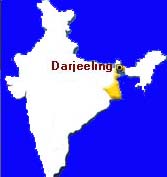Agitation for a separate Gorkhaland may hit tourism in Darjeeling
 Darjeeling, Dec 12 : The ethnic Gorkha agitation for a separate Gorkhaland in Darjeeling might affect the region''s tourism potential.
Darjeeling, Dec 12 : The ethnic Gorkha agitation for a separate Gorkhaland in Darjeeling might affect the region''s tourism potential.
The Gorkha Janamukti Morcha (GJM) has been demanding a separate state in the Himalaya foothills to be carved out of West Bengal.
The demand gained momentum after New Delhi announced this week that it would consider a new Telangana state out of Andhra Pradesh.
Those associated with tourism, however, feel agitations will scare off the tourists. "Any strike, any (shutdown affects tourism. This being Christmas time, there is quite a lot of tourist movement in this region now. People start coming, domestic as well as international tourists. This will create a panic among the tourists, they will probably defer to come here and will probably cancel their trips which they are planning during that schedule," said Samrat Sanyal, Secretary, Eastern Himalayan Tour Operators Association, West Bengal.
Last year, a series of strikes and agitations by the GJM had badly hit tourism and the tea industry, the two mainstays of the local economy.
At least 1,200 people died in the first Gorkhaland campaign in the 1980s, but protests ended a few years later after Gorkha leaders accepted limited autonomy.
Amidst all these trends, the tribals inhabiting the foothills such as the Dooars and Terai regions have protested against the creation of Gorkhaland, claiming that they represent over 60 per cent of the population in the region.
While Dooars falls under Jalpaiguri district, Terai comes under Darjeeling district dominated by the ethnic Nepalese and Mahtos and also the tribal Santhals, Bhils, Mundas and Oraons.
The Gorkha population in West Bengal is around one million out of 80 million people, although the overwhelming majority are concentrated in Darjeeling. (ANI)